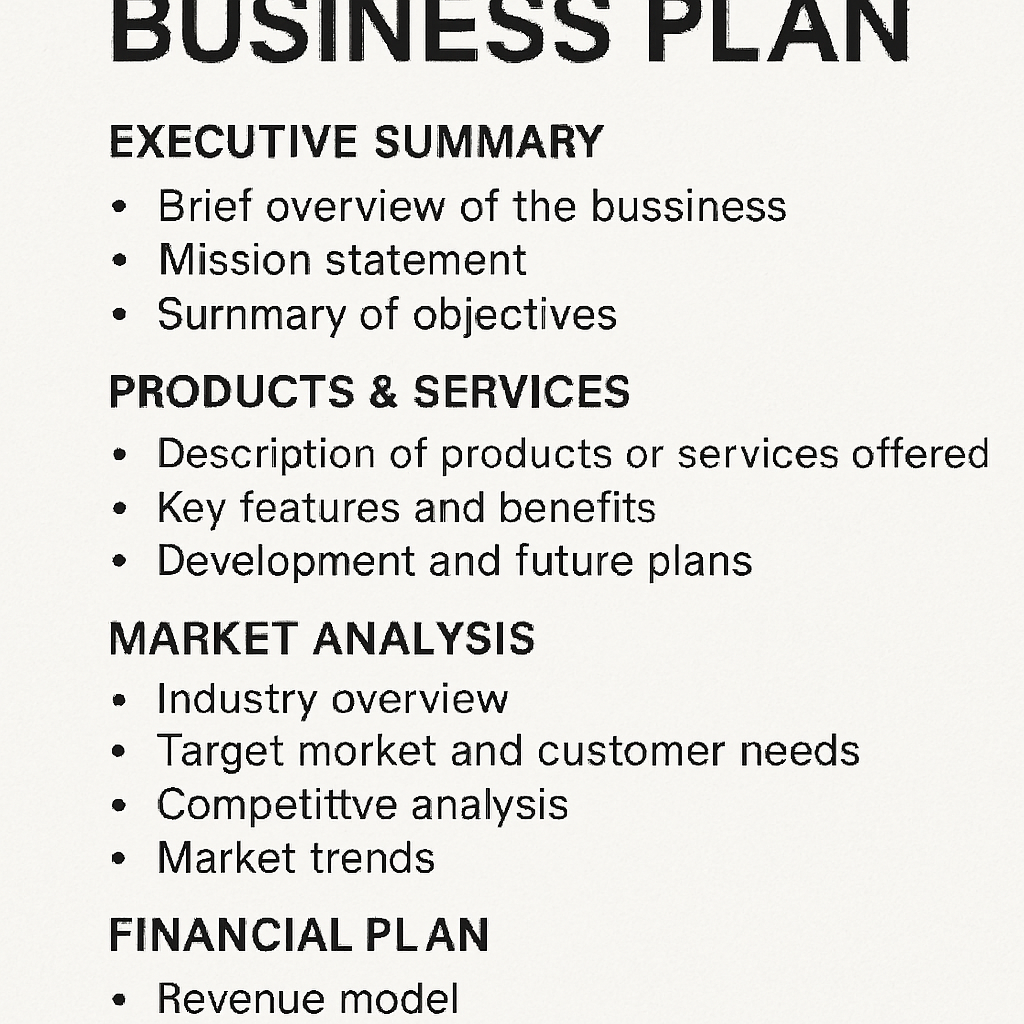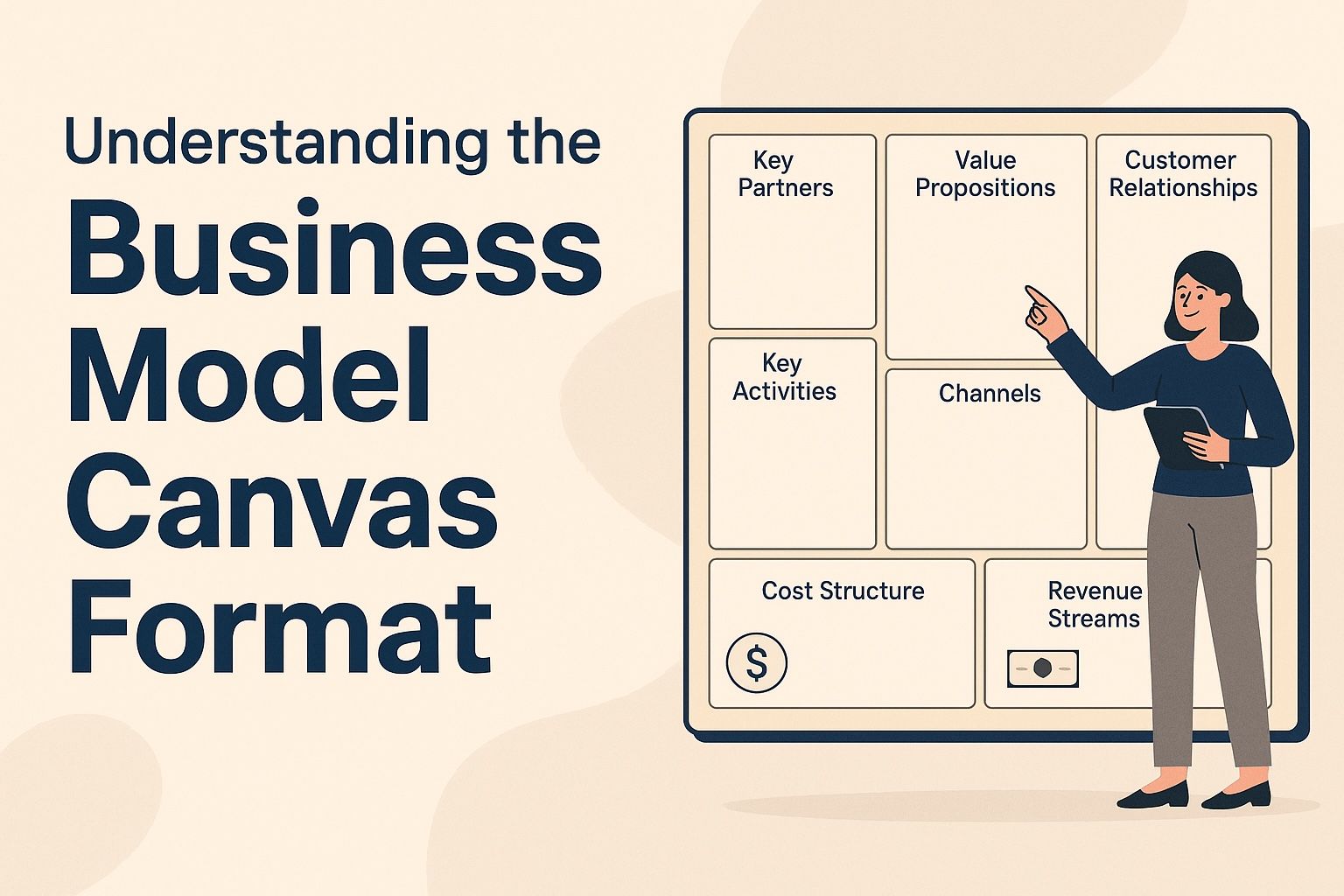Effective Business Growth Strategies for 2025
As we step into 2025, the landscape for business growth continues to evolve rapidly. With new technologies emerging and market dynamics shifting, it's crucial to adopt effective growth strategies that align with current trends. In this article, we'll explore key business growth strategies that can help your company thrive in the coming year.
Understanding the intricacies of growth strategies can set a solid foundation for success. Whether it's leveraging technology, enhancing customer experiences, or expanding your offerings, being proactive and strategic will be essential. Let's delve deeper into how to navigate this evolving business terrain effectively.
Understanding Business Growth Strategy
A business growth strategy is a plan that outlines how a company intends to expand its operations, increase revenue, and achieve long-term success. It involves identifying opportunities, setting goals, and implementing actions to reach those goals. Let's delve into the essential components of effective growth strategy planning.
Identifying Opportunities for Growth
The first step in any growth strategy is identifying opportunities. This could involve exploring new markets, launching new products, or improving existing services. Look for gaps in the market that your business can fill, and assess the competitive landscape to find areas where you can stand out.
Conducting a thorough market analysis is crucial in identifying these opportunities. Research emerging trends, consumer behaviors, and technological advancements that could impact your industry. This will allow you to anticipate changes and position your business to capitalize on them effectively.
Networking with industry leaders and attending relevant conferences can also provide insights into potential growth areas. By engaging with peers and experts, you can gain valuable perspectives that might highlight opportunities you hadn't considered. Building a network of mentors and advisors can further aid in recognizing and seizing growth opportunities.
Setting Clear Goals
Once opportunities are identified, it's essential to set clear and achievable goals. These should be specific, measurable, attainable, relevant, and time-bound (SMART). For instance, if your goal is to increase market share, define the exact percentage you aim to capture within a specific timeframe.
Breaking down larger goals into smaller, actionable steps can make the process less overwhelming and more manageable. Each step should have its own set of deadlines and responsible parties to ensure accountability and progress tracking. This approach not only clarifies the path to achieving your goals but also helps maintain momentum throughout the process.
Regularly reviewing and adjusting goals based on performance and changing conditions is key. The business environment is dynamic, and goals should be flexible enough to adapt to new information or shifts in the market. This adaptability ensures that your growth strategy remains relevant and effective over time.
Aligning Resources and Capabilities
Aligning your resources and capabilities with your growth strategy is critical to its success. Assess your current resources, including financial, human, and technological assets, to determine how they can support your growth objectives. This may involve reallocating resources or investing in new capabilities to fill gaps.
Developing a clear understanding of your team's strengths and weaknesses can help in effectively deploying resources. Identifying areas that require additional training or support can enhance overall performance and ensure that your team is well-equipped to execute the growth strategy.
Consider leveraging external resources or partnerships to augment your capabilities where necessary. Collaborations with other businesses or hiring consultants can provide the expertise and additional resources needed to achieve your growth goals. This external support can be particularly valuable when entering new markets or adopting new technologies.
Strategic Growth Strategies for 2025
Now that we understand the basics, let's explore some strategic growth strategies that can propel your business forward in 2025.
1. Embrace Digital Transformation
In today's digital age, technology plays a pivotal role in business growth. Embracing digital transformation can streamline operations, improve customer experiences, and open up new revenue streams. Consider investing in automation, data analytics, and artificial intelligence to enhance efficiency and decision-making.
Digital transformation is not just about adopting new technologies but integrating them into your business processes. This integration requires a comprehensive understanding of how these technologies can improve specific operations or customer interactions. Training employees and fostering a culture that embraces technological change are essential components of a successful digital transformation.
Leveraging data analytics can provide insights into customer behaviors, operational efficiencies, and market trends. By analyzing this data, businesses can make informed decisions that enhance customer experiences and drive growth. Predictive analytics, in particular, can help forecast future trends and customer needs, allowing for proactive strategy adjustments.
Artificial intelligence (AI) can automate routine tasks, freeing up employees to focus on more strategic initiatives. AI can also enhance customer interactions through personalized recommendations and improved customer support. As AI technology continues to evolve, its applications in business are expected to expand, offering even more opportunities for growth.
2. Focus on Customer Experience
Customer experience is a key differentiator in today's competitive market. By prioritizing customer satisfaction, you can build loyalty and encourage repeat business. Implement strategies to gather customer feedback, personalize interactions, and resolve issues promptly. A positive customer experience can lead to word-of-mouth referrals, further fueling growth.
Understanding your customers' needs and preferences is the foundation of an exceptional customer experience. Use surveys, focus groups, and social media interactions to gather insights into what your customers value most. This information can guide your efforts to enhance customer satisfaction and loyalty.
Personalization is a powerful tool in improving customer experience. Tailor your products, services, and communications to meet individual customer needs and preferences. Personalized experiences can significantly enhance customer satisfaction and foster long-term relationships.
Resolving customer issues promptly and effectively is crucial in maintaining a positive experience. Implement robust customer support systems that allow for quick resolutions and follow-ups. Empower your customer service team with the tools and training needed to address customer concerns efficiently and empathetically.
3. Diversify Your Product or Service Offerings
Expanding your product or service offerings can help capture a broader audience and increase revenue streams. Analyze customer needs and market trends to identify opportunities for diversification. Whether it's introducing complementary products or entering new markets, diversification can mitigate risks and drive growth.
Conducting market research is essential in identifying diversification opportunities. Analyze industry trends, customer demands, and competitive offerings to determine gaps that your business can fill. This research will inform your decisions on which products or services to develop or introduce.
Diversification should align with your company's core strengths and strategic objectives. Consider how new offerings complement your existing portfolio and support your long-term goals. Ensuring a strategic fit can enhance the success of your diversification efforts and maximize their impact on growth.
Testing new products or services before a full-scale launch can mitigate risks associated with diversification. Pilot programs or limited releases can provide valuable feedback and insights, allowing for adjustments before a broader rollout. This approach can increase the chances of success and minimize potential setbacks.
4. Invest in Employee Development
Your employees are your greatest asset. Investing in their development can enhance productivity, creativity, and innovation. Offer training programs, mentorship, and career advancement opportunities to empower your workforce. A motivated and skilled team can contribute significantly to achieving your growth objectives.
Identify the skills and competencies required to support your growth strategy. This assessment will guide your employee development initiatives and ensure they align with your strategic goals. By addressing skill gaps and enhancing capabilities, you can build a team that is well-equipped to drive growth.
Training programs should be tailored to meet the specific needs of your employees and organization. Consider offering a mix of in-house training, online courses, and workshops to provide diverse learning opportunities. Encouraging continuous learning and professional development can foster a culture of innovation and improvement.
Mentorship programs can support employee development by providing guidance and support from experienced colleagues. These programs can enhance knowledge sharing and foster a collaborative work environment. By investing in your employees' growth, you can build a committed and high-performing team that drives business success.
5. Optimize Marketing Strategies
Effective marketing is essential for reaching new customers and retaining existing ones. Review your marketing strategies to ensure they align with current trends and consumer preferences. Leverage digital marketing channels, such as social media and content marketing, to reach a wider audience and engage them meaningfully.
Understanding your target audience is critical in optimizing your marketing strategies. Conduct market research to gain insights into your customers' preferences, behaviors, and decision-making processes. This information can inform your messaging and channel selection, ensuring your marketing efforts resonate with your audience.
Digital marketing offers numerous tools and platforms to engage customers and drive growth. Social media, email marketing, and content marketing are powerful channels for building brand awareness and connecting with your audience. Develop a comprehensive digital marketing strategy that leverages these tools to achieve your growth objectives.
Regularly evaluating the performance of your marketing efforts is crucial in optimizing your strategies. Use analytics and metrics to assess the effectiveness of your campaigns and identify areas for improvement. By continuously refining your marketing approach, you can enhance your reach, engagement, and conversion rates.
6. Collaborate and Form Strategic Partnerships
Collaboration can open up new avenues for growth. Consider forming strategic partnerships with other businesses that complement your offerings. This can lead to shared resources, expanded networks, and access to new markets. A well-chosen partnership can be mutually beneficial and accelerate growth.
Identify potential partners whose strengths and capabilities align with your growth objectives. Look for businesses that offer complementary products or services, share a similar target audience, or have a strong market presence. Strategic partnerships should enhance your value proposition and provide mutual benefits.
Establishing clear goals and expectations is crucial in forming successful partnerships. Define the objectives, roles, and responsibilities of each partner to ensure alignment and effective collaboration. Regular communication and ongoing evaluation of the partnership's performance can help maintain a productive relationship.
Leveraging the strengths and resources of your partners can enhance your growth efforts. Collaborative initiatives, such as joint marketing campaigns or product development projects, can broaden your reach and drive innovation. By working together, partners can achieve outcomes that may not be possible independently.
How to Implement a Growth Strategy
Implementing a growth strategy requires careful planning and execution. Here are some steps to guide you through the process:
Develop a Comprehensive Plan
Create a detailed plan that outlines your growth objectives, strategies, and action steps. Assign responsibilities, set timelines, and allocate resources to ensure the successful implementation of your plan.
Involve key stakeholders in the planning process to gain diverse perspectives and buy-in. Engaging employees, partners, and other stakeholders can enhance the quality of your plan and foster a sense of ownership and commitment. Collaborative planning can also uncover potential challenges and solutions early on.
Ensure that your plan is flexible and adaptable to changing circumstances. The business environment is dynamic, and your growth strategy should be able to accommodate unforeseen changes and opportunities. A flexible plan allows for adjustments and course corrections, enhancing its effectiveness and sustainability.
Documenting your plan and communicating it effectively to all stakeholders is crucial. Clear communication ensures that everyone understands the objectives, strategies, and their respective roles. Regular updates and progress reports can maintain alignment and focus throughout the implementation process.
Monitor Progress and Adapt
Regularly monitor your progress to ensure you're on track to meet your goals. Use key performance indicators (KPIs) to measure success and identify areas for improvement. Be prepared to adapt your strategy based on market changes and feedback.
Establishing a robust performance monitoring system is essential in tracking your progress. Define relevant KPIs that align with your growth objectives and provide meaningful insights into your performance. Regularly review these metrics to assess progress and identify trends or issues.
Encourage feedback from employees, customers, and other stakeholders to gain insights into your strategy's effectiveness. This feedback can highlight strengths and areas for improvement, guiding adjustments and refinements. A proactive approach to feedback can enhance your strategy's impact and outcomes.
Adapting your strategy in response to new information or changes in the market is crucial. Be open to revising your approach, reallocating resources, or setting new goals as needed. This adaptability ensures that your growth strategy remains relevant and effective in achieving your objectives.
Foster a Culture of Innovation
Encourage a culture of innovation within your organization. Empower employees to share ideas and experiment with new approaches. A culture that values creativity and embraces change can drive continuous improvement and growth.
Promote an environment that encourages risk-taking and experimentation. Provide employees with the freedom and resources to explore new ideas and initiatives. Recognizing and rewarding innovative efforts can further motivate your team to contribute to your growth strategy.
Facilitate collaboration and knowledge sharing among employees to spark creativity and innovation. Cross-functional teams and regular brainstorming sessions can generate fresh perspectives and solutions. By fostering collaboration, you can harness the collective intelligence of your team to drive growth.
Leadership plays a critical role in cultivating an innovative culture. Lead by example and demonstrate a commitment to innovation and continuous improvement. Encourage open communication, celebrate successes, and learn from failures to create an environment where innovation thrives.
Conclusion: Achieving Sustainable Growth
Sustainable business growth requires a strategic approach and a willingness to adapt to changing circumstances. By understanding the core elements of a growth strategy and implementing effective tactics, your company can thrive in 2024 and beyond. Embrace digital transformation, prioritize customer experience, and foster innovation to position your business for long-term success.
By staying informed about industry trends and remaining agile, your business can navigate challenges and seize opportunities for growth. Remember, the key to success lies in strategic planning, execution, and a commitment to continuous improvement. With the right strategies in place, 2025 can be a year of remarkable growth for your company.
Sustainable growth is not just about short-term gains but building a resilient business that can thrive amid changes. By focusing on strategic initiatives and fostering a culture of innovation and adaptability, your company can achieve long-term success. As you implement these growth strategies, remain committed to learning and evolving, ensuring that your business continues to prosper in the years to come.




